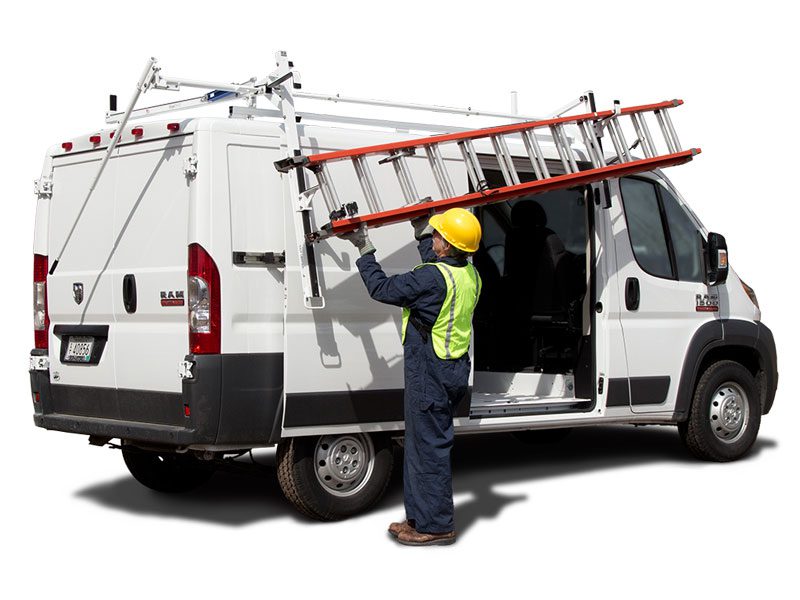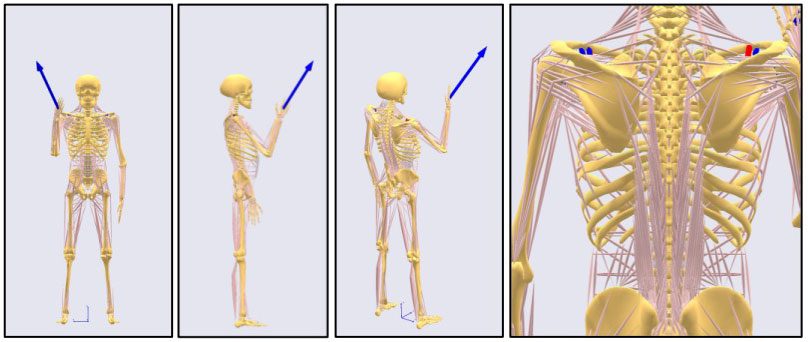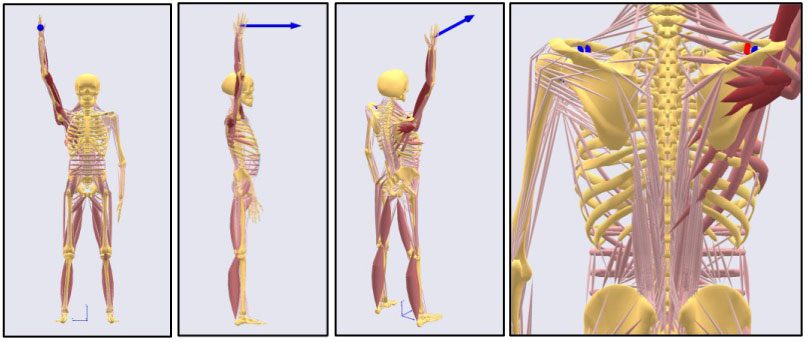How a product’s design affects the user is every bit as important as the quality of materials and construction. Prime Design’s ErgoRack ladder rack design is centered on safely minimizing the physical stresses involved in loading and unloading ladders.
ErgoRack significantly reduces the leverage of operating force to the lower back and results in economic benefits for customers due to reduced injury and risk to the end-user.
How Can Work Vehicle Fleets and Ladder Rack Operators Benefit from Ergonomics?
Increased Productivity
Customers report that ergonomic ladder rack usage decreases operator fatigue and increases productivity.
Injury Prevention
By requiring much less exertion, ergonomic ladder racks prevent muscle strains and back injuries. Additionally, operators do not need to climb on vehicles, greatly reducing falling injuries.
Cost Effectiveness
Improved efficiency and decreased workers’ compensation claims make ergonomic ladder racks a smart investment.
How Do Occupational Injuries Affect My Fleet?
According to the United States Bureau of Labor Statistics, 38.5% of work-related musculoskeletal disorders in U.S. workers in 2016 were related to the back.
According to the U.S. Bureau of Labor Statistics, back injuries at maintenance/repair, heavy/tractor-trailer truck, or freight/stock/material jobs made up almost half (~40%) of the injuries that resulted in days off work.
On average, 9 days of work were lost to back injuries from 2019–2020 (via National Safety Council).


Why Do Ergonomics Matter in Occupational Settings?
Ergonomics is the study and application of engineering objects or systems around human factors like posture, anatomy, and habits, to improve users’ safety, health, and comfort.
When applied to equipment design for usage in everyday occupational settings, ergonomics can reduce the risk of injuries, maintain high worker morale, improve efficiency, and lower workers’ compensation claims.
The Effects of Ergonomics on a Worker’s Body: An Independent Ladder Rack Study
How can using a traditional ladder rack be detrimental to a worker’s health?
Prime Design engaged Ozen Engineering to conduct an independent study on the effects on the body from a ten-pound horizontal pull with hands stretched above the head as is typical when using fixed ladder racks mounted on top of vans and work trucks. The same analysis was completed as applicable for operators removing and storing ladders using the Prime Design ErgoRack.

Case 1

Case 2

The Results
The study’s results showed a smaller magnitude of low back compression, low back shear force, overall torso muscle activity, summed erector spinae muscle force, and maximum erector spinae muscle activity for Case 1 (in green) when compared to Case 2 due to significant back muscle compression forces generated when exerting horizontal forces above shoulder level.
The diagram shows how the correct ergonomic movements (in green) ease the impact the body experiences to exert the same amount of force.
| Musculoskeletal Simulation | ||||
|---|---|---|---|---|
| Performed on 50%tile (by stature) male Stature: 180 cm, Mass: 75.005 kg | ||||
| Pull Force: 10lbs = 44.48222 (Newtons) | Case 2 In-line Pull | Case 3 Hz Pull | Case 2 (lbs) | Case 3 (lbs) |
| Low Back Compression (L4/L5) Force (Newtons)** | 436.93 | 1317.13 | 98.09 | 295.68 |
| Low Back Shear (L4/L5) Force (Newtons) | 33.29 | 149.97 | 7.47 | 33.67 |
| Max. Torso Muscle Activation (% capable) | 14% | 44% | ||
| ErectorSpinae_maxMuscleForce – of muscle fascicles (Newtons) | 14.47 | 48.38 | 3.25 | 10.86 |
| ErectorSpinae_maxMuscleActivity (% capable) | 14% | 34% | ||
| ErectorSpinae_sumMuscleForce – sum of erector spinae fascicles (Newtons) | 86.68 | 932.70 | 19.46 | 209.38 |
| **Includes weight of upper body | ||||


